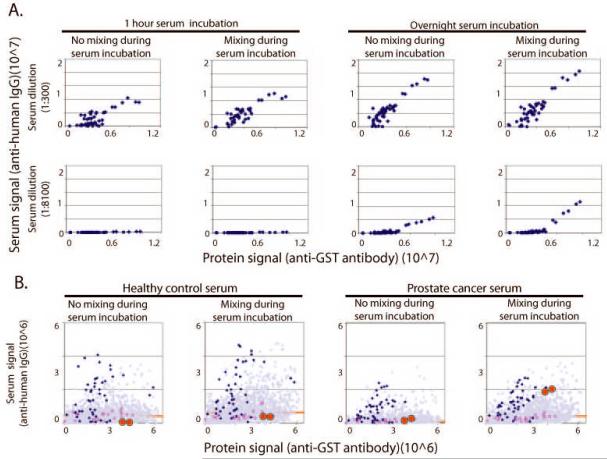Figure 3.
Optimizing the detection of bona fide but rare antibody signals on NAPPA. Because many autoantibodies can be of low concentration and low affinity in patient sera, we tested the effect of serum mixing, incubation time, and incubation temperature on the detection of the known viral antigen EBNA-1 and to an antigen, NAP1L3, in prostate cancer sera. A. At both 1:300 (top) and 1:8100 (bottom) serum dilutions, bound IgG antibodies are more readily detected with an overnight incubation on NAPPA (right) than with a one hour incubation (left). Antibody detection correlates with protein expression, but only during extended incubations and with mixing does the reaction achieve equilibrium. B. Mixing of the sera increases detection of tumor antigen-specific antibodies. Healthy control sera (left two panels) and prostate cancer serum (right two panels) were diluted at 1:600 and incubated on the protein microarrays overnight at 4°C, with or without mixing as shown. EBNA-specific responses are shown in blue, p53 specific response are shown in red squares, and the prostate tumor antigen NAP1L3 is shown in red circles. Response to other genes on the array is shown as purple triangles and the trimmed mean (25–75%) signal is shown as a red line. By mixing the sera, detection of NAP1L3 is specifically enhanced over background.

